This is a worrying sign of the nature of security threats that will affect airports in the future, particularly.
Published On 3 Oct 2025
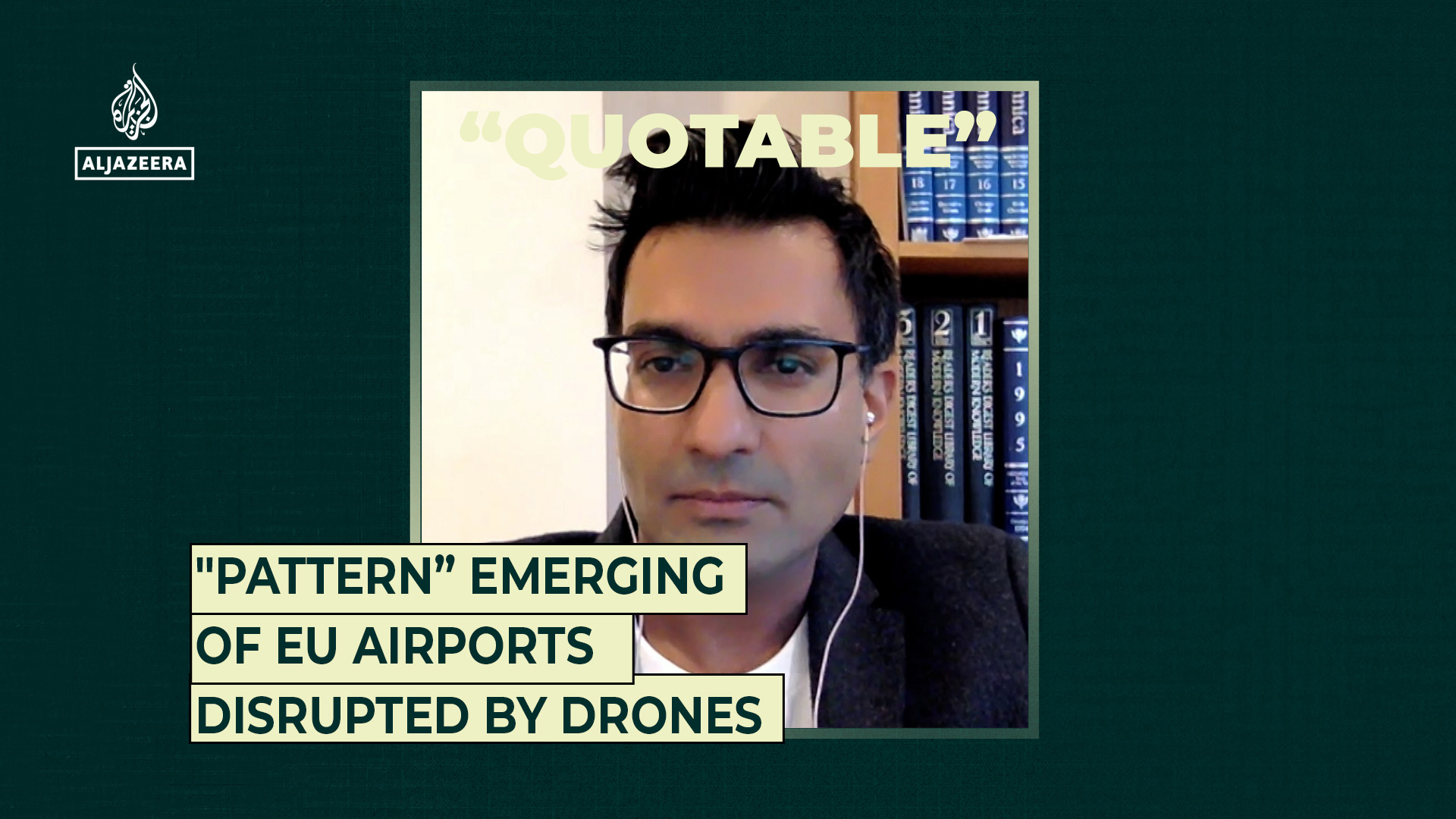
This is a worrying sign of the nature of security threats that will affect airports in the future, particularly.
Published On 3 Oct 2025
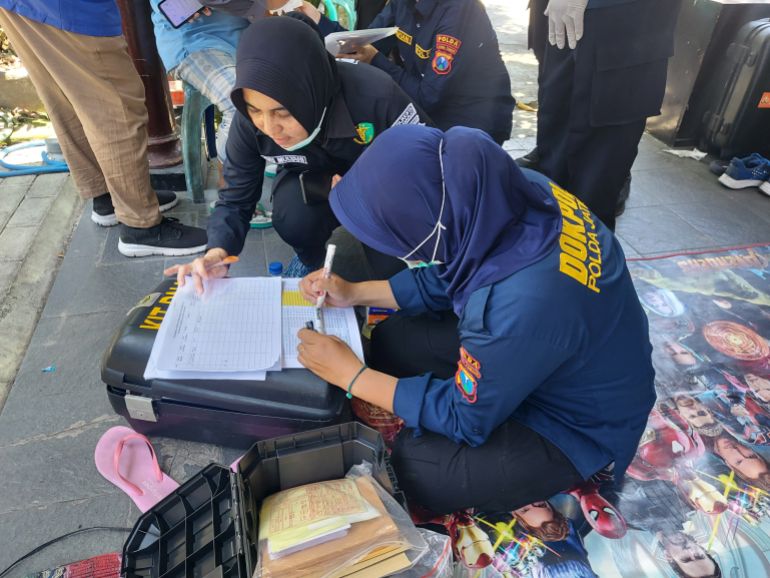
Sidoarjo, East Java – Dewi Ajeng was at home in Probolinggo – a city in Indonesia’s East Java – when she received a chilling message in the group chat of her son’s school in Sidoarjo, located some two hours away.
There had been “an incident”.
list of 4 itemsend of list
The Al-Khoziny Islamic Boarding School had collapsed, trapping the young students, all boys, mostly aged between 12 and 18 years old, inside.
Dewi’s 13-year-old son, Selendra Haikal Rakaditya, was among those buried beneath the rubble.
“I just felt a range of mixed emotions. I was sad, frantic, crying. Then my husband messaged me to confirm the news,” she told Al Jazeera.
“I called my friend in Sidoarjo and told her to go to the school and find him, and that I was on my way.”
Dewi arrived at about 5.30pm, about two hours after the school collapsed during afternoon prayers.
Her son, Haikal, had not been found.
The names of children who were rescued and taken to different hospitals in the Sidoarjo area were pinned to large notice boards set up by search and rescue teams.
“There were six ‘Haikals’ on the lists and I went to every hospital trying to find out if my son was there,” Dewi said.
“Then someone sent me a video from the scene and I could hear a voice shouting, ‘Mama, mama, mama,’ and I thought, ‘Thank God, that’s him, he’s calling for me’,” she said.
“From then on, I focused on the scene of the collapse. I just knew he was in there, and I told the search and rescue teams that he needed to be rescued.”
But a rescue would not be easy.
Young Haikal was trapped inside an air pocket under the fallen debris with five other pupils. He was the second closest to a jagged escape route through gaps in the rubble. But the way out was blocked by the body of one of Haikal’s friends, who died due to the force of the building collapse.
There was no way for Haikal to crawl out, or for the rescuers to squeeze in and reach him.
The difficult rescue effort took three days – a terrifying time for Dewi as members of the search and rescue teams fought to reach her son. A brief moment of hope arrived when they were able to create a shaft through which they passed bread and water to the trapped students.
Almost exactly 72 hours after the boarding school collapsed, Haikal was brought out of the debris by rescuers and placed on a stretcher. Dewi told Al Jazeera that rescuers advised her not to look at her son, and instead go straight to the local hospital to see him.
“When I got there, I don’t even remember what happened, I was crying, screaming. I just kept praying. When I finally saw him, I just thanked God. He had withstood everything for 72 hours. He had made it,” she said.
Slowly, Dewi said, her son told her what had happened.
He had almost finished afternoon prayers on the second floor of the boarding school on Monday when chunks of the ceiling started to fall on the boys.
“Then he heard a cracking sound and the building caved in completely. He said he felt like he was being pulled in all different directions,” Dewi said.
What no one knew at the time, but which the authorities confirmed later, was that construction workers had been pouring concrete on an upper floor of the boarding school, the weight of which had caused the building to collapse.

Haikal told how hundreds of students ran in all directions. About 100 had made it out of the building, some with significant head injuries and broken bones. Five students died, and at least 60 were unaccounted for – including Haikal and his friends.
“I asked if he screamed when he found himself trapped in the darkness of the rubble, and he said that he didn’t,” Dewi said.
“He remembered his science classes at the school and how he had been taught to conserve his energy in an emergency situation, so he tried to stay calm and not panic. He couldn’t breathe at first, and he didn’t want to tire himself out. Only later did he call for me,” she said.
Haikal and his trapped friends talked to each other as they waited for help to arrive. Some fell asleep amid the dust, shattered concrete and twisted metal that had once been their classrooms.
Haikal’s leg was trapped by a falling piece of the roof, but he still prayed, sitting up at every prayer time and encouraging his friends to do the same, his mother said.
“It was extraordinary what they endured,” she said.

Dewi credits her son’s ability to survive the disaster to his resourceful personality, telling how she had discouraged him from using a mobile phone or other digital gadgets and that he was always outside playing, and enjoyed searching for animals and insects in their garden.
“He’s a very creative child,” she said.
For now, Dewi is focused on Haikal’s physical and emotional wellbeing, after the trauma endured over three claustrophobic days and two dark nights trapped beneath the collapsed school.
He is still in intensive care, and doctors are working on restoring blood flow to his leg, which was affected by the cement slab falling on him.
When he is well again, Dewi said they will find a new school for her son to attend.

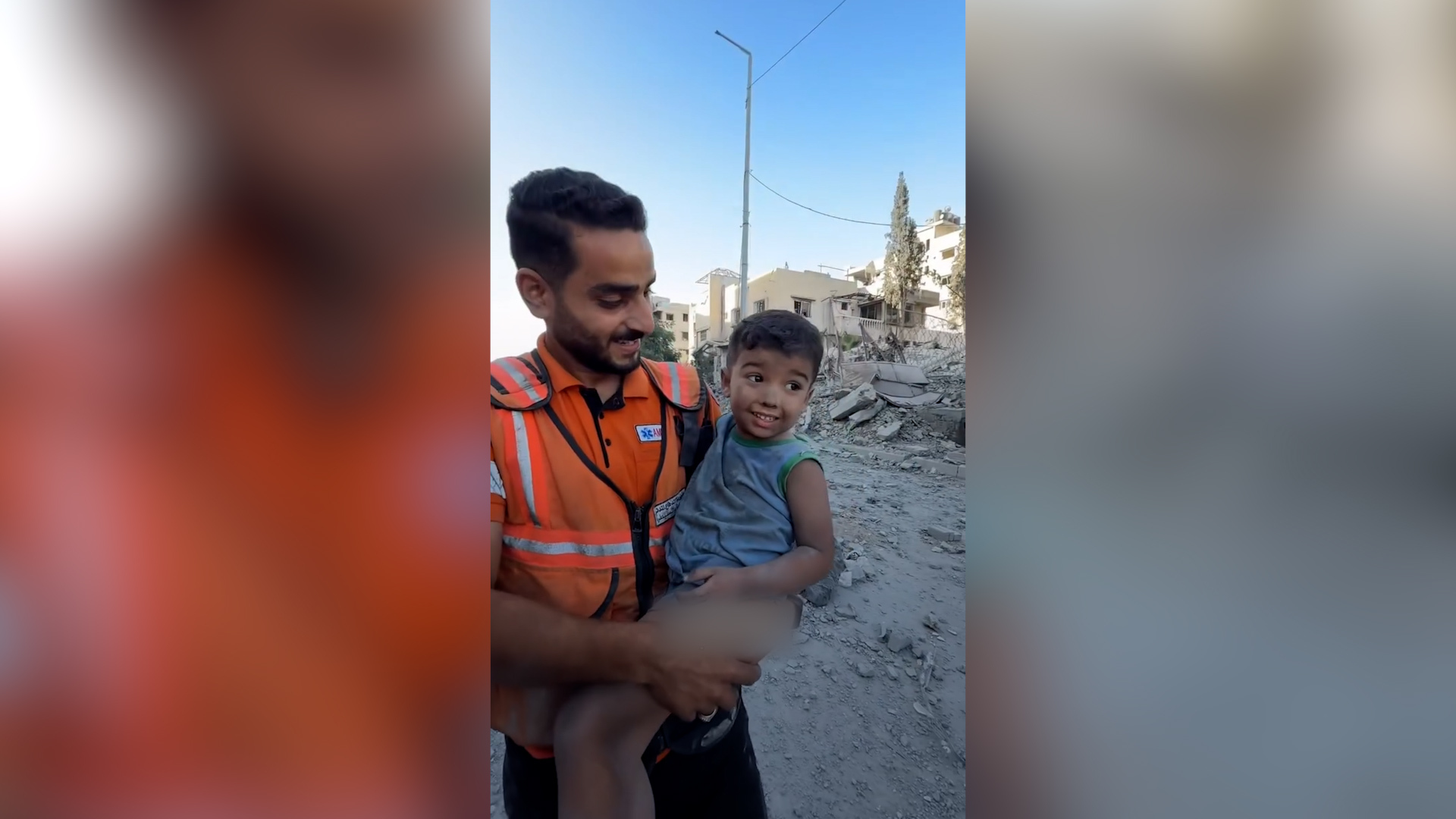
Mohammed Al-Yazji, a Palestinian boy, was rescued from the rubble of his destroyed home in Gaza City. He reassured his rescuer in a trembling voice, saying, “I’m okay,” while hiding in dust and bruises.
Published On 3 Oct 2025
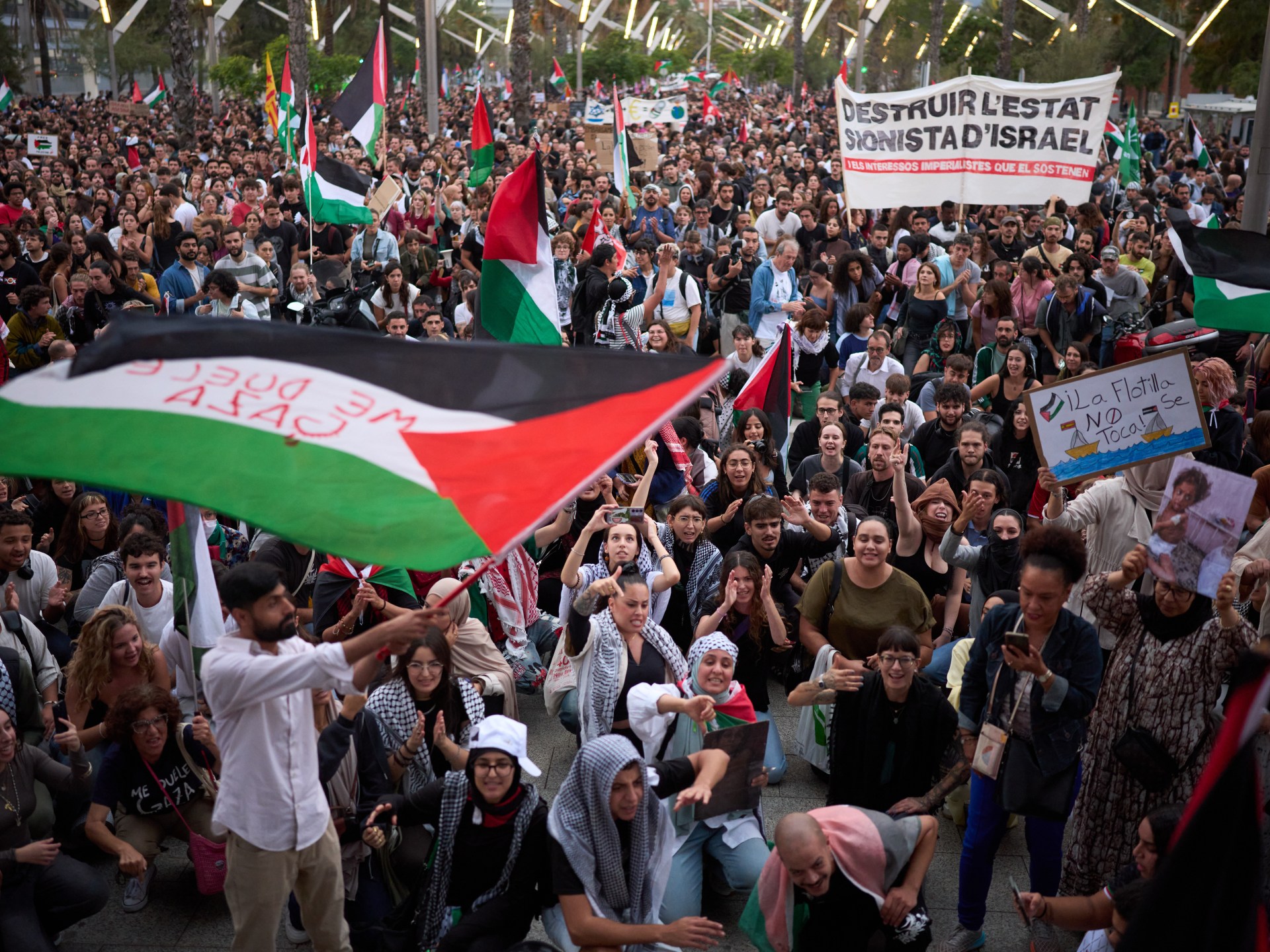
Worldwide protests have erupted following Israel’s interception of the Global Sumud Flotilla carrying humanitarian aid to Gaza, with demonstrators demanding stronger sanctions against Israel.
Across continents from Europe to Australia and South America, crowds gathered on Thursday to protest against the Israeli navy’s blockade of 41 ships carrying at least 400 people, including prominent figures like climate activist Greta Thunberg and politicians, who were attempting to reach Gaza, where the UN has reported famine conditions after nearly two years of Israel’s genocidal war.
In Barcelona, about 15,000 demonstrators marched, chanting “Gaza, you are not alone,” “Boycott Israel,” and “Freedom for Palestine”. Spanish television showed riot police forcibly repelling protesters who attempted to breach barriers. Former Barcelona mayor Ada Colau was among those intercepted at sea and now faces deportation along with fellow activists, including Nelson Mandela’s grandson, “Mandla” Mandela.
Several hundred protesters also gathered outside Ireland’s parliament in Dublin, where Palestinian solidarity is often linked to Ireland’s historical struggle against British colonialism. Miriam McNally, whose daughter joined the flotilla, told AFP: “I am worried sick for my daughter, but I am so proud of her and of what she’s doing. She is standing up for humanity in the face of grave danger.”
Paris saw approximately 1,000 protesters at Place de la Republique, while in Marseille, about 100 demonstrators were arrested after attempting to block access to Eurolinks, a weapons manufacturer accused of selling military components to Israel.
In Italy, where major unions have called for a Friday general strike in solidarity with the flotilla, demonstrations spread across major cities. Rome alone saw 10,000 participants, according to police, with protesters chanting: “We are prepared to block everything. The genocidal machine must stop immediately.”
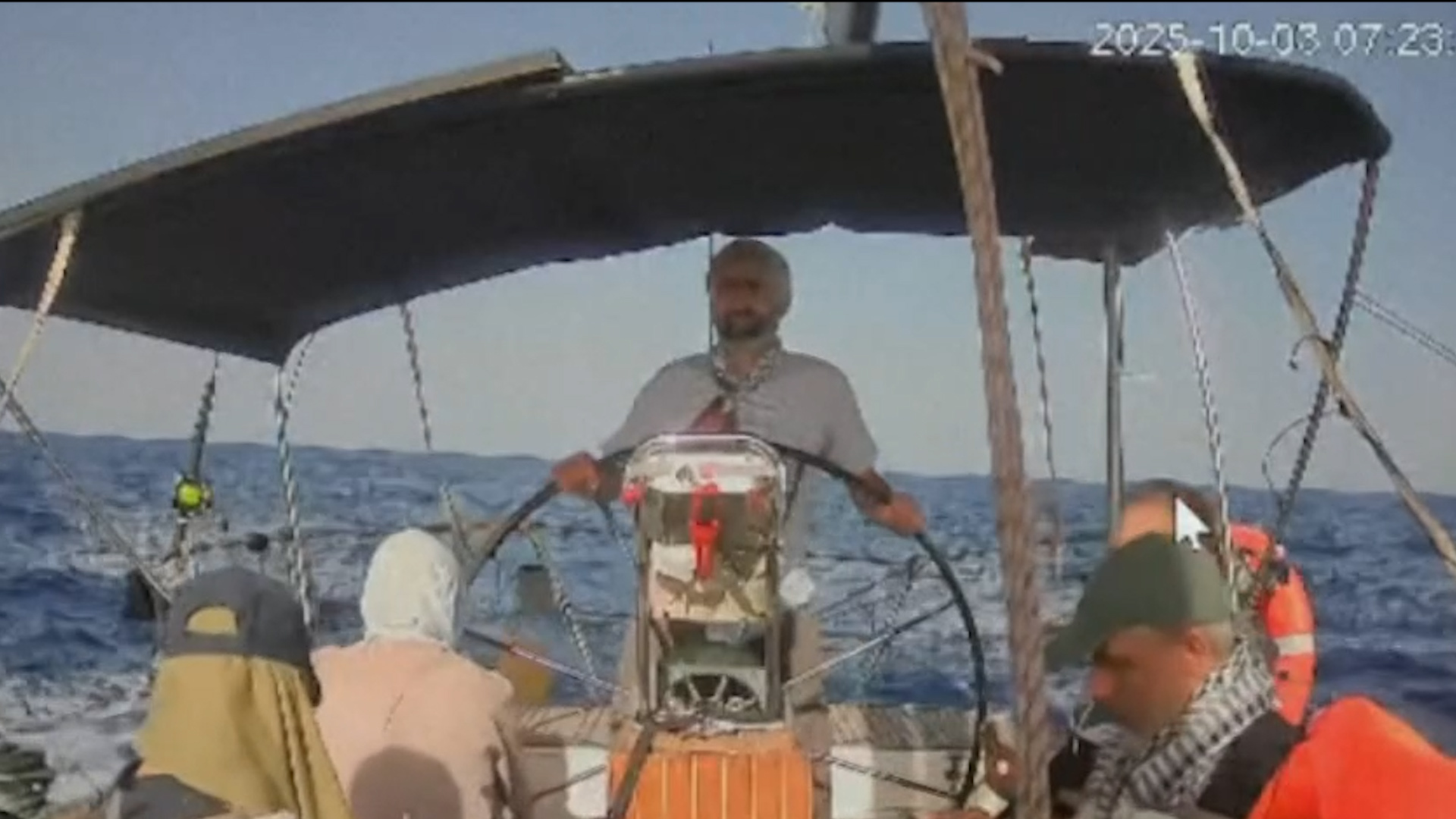
The Marinette, which Israel intercepted after almost 40 others, is the last vessel on the Global Sumud Flotilla heading for Gaza. Within a few hours, the Polish-flagged boat is scheduled to be stopped.
Published On 3 Oct 2025